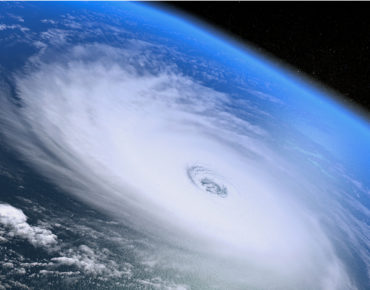Hurricane Intensity Predictions Getting Help From AI

AI techniques to better predict hurricane intensity compared to the most widely used existing U.S. hurricane models are being deployed by researchers at the Pacific Northwest National Laboratory (PNNL) to give affected residents better information about preparing or evacuating for strong storms.
The AI analysis is being conducted because hurricane prediction still poses challenges for researchers, who scramble to produce accurate predictions of the formation, track and intensity of tropical cyclones to protect people in their path. To make matters worse, the 2021 Atlantic hurricane season has already produced 20 named storms, nearly double the average observed since 1991 – and the season is not over for another two months.
The 17-page study, “Deep Learning Experiments for Tropical Cyclone Intensity Forecasts,” published in July in the American Meteorological Society journal, Weather and Forecasting, was conducted by a team of researchers, including co-author Wenwei Xu of the Marine and Coastal Laboratory at PNNL.
“There are several research components around tropical cyclones that are interesting,” Xu said in an interview with Datanami. “But over the years, the tropical cyclone track prediction has been progressing very rapidly, so the accuracy has been increasing a lot. However, the intensity forecast [is] an area that suffers still.”
Intensity forecasts matter quite a bit: even if you know where a storm was going, you might not prepare adequately unless you know how strong it is going to be – and the most dangerous hurricanes are often those that rapidly intensity, not offering enough warning for residents to safely evacuate. Just this August, Hurricane Ida intensified from a Category 1 storm to nearly a Category 5 storm in less than 24 hours.
“There are so many examples of hurricane forecasts failing,” said PNNL Earth scientist Karthik Balaguru, another co-author of the study, in an interview with PNNL’s Brendan Bane. “If you’re telling everyone that the storm will be a Category 2, but suddenly it becomes a Category 4, of course that’s a huge problem.”
Xu, along with six colleagues, created a deep learning-based, multi-layer perceptron model to predict the intensity of tropical cyclones. The team trained the model using predictors from the global Statistical Hurricane Intensity Prediction Scheme (SHIPS), aiming to forecast changes in tropical cyclones in the Atlantic basin using variables like wind speed, air temperature and water temperature. Given these inputs, the multi-layer perceptron would seek to establish relationships to the given outputs (tropical cyclone intensity).
 The model was trained on an in-house cluster at PNNL made available by the lab’s “PIC” (PNNL Institutional Computing) program, through which, Xu said, they gained access to CPU- and GPU-based nodes – though the most successful model they tested, the multi-layer perceptron, only made use of CPUs.
The model was trained on an in-house cluster at PNNL made available by the lab’s “PIC” (PNNL Institutional Computing) program, through which, Xu said, they gained access to CPU- and GPU-based nodes – though the most successful model they tested, the multi-layer perceptron, only made use of CPUs.
To test the model, the researchers turned to a leave-one-year-out technique, alternately excising every other year from 2010 through 2018 from training and testing the partially blinded model on the excised year. They measured the results against a range of other models, including the official predictive model of the National Hurricane Center and the SHIPS model itself. The result: outperformance by 9 percent to 20 percent. Additional tests in 2019 and 2020 storms yielded similar results, showing a 5 percent to 22 percent improvement in accuracy. The researchers also coupled the intensity model to a tropical cyclone track model, which generated realistic [tropical cyclone] intensity in the Atlantic basin, according to the study.
“Even a five percent improvement is a big deal,” Balaguru said — but the model’s implications do not stop there. Thanks to its easy adaptability and lightweight compute load once trained (the trained model, the researchers say, can run on a commercial laptop), the new model is also well-suited to test how hurricanes will develop differently in a warmer world. “If you know the state of the ocean and atmosphere today, and you know the state of the storm, can you predict what it will be 24 to 48 hours later?” Balaguru said. “What about 30 years later, when there is a lot of global warming and we have a different climate? That is a different problem, a different set of questions, and our model can address them.”
The team also believes that these simulated hurricanes could help generate additional data for other studies in a field that often suffers from data scarcity, with only a handful of hurricanes occurring in any given year. And with tropical weather increasingly affecting everyone, it is no surprise that the stakes are personal to some of the team.
“I grew up in the lower Yangtze River basin in China,” Xu said. “I remember vividly when there was a tropical cyclone with a typhoon in there and having to evacuate the school and [being] so worried that the school bus would actually be flipped upside down by the typhoons … It is definitely a privilege to be able to work on natural disasters … It feels so cool to be able to actually use [deep learning] to do something very useful in areas like tropical cyclones.”
This article first appeared on sister website Datanami.










